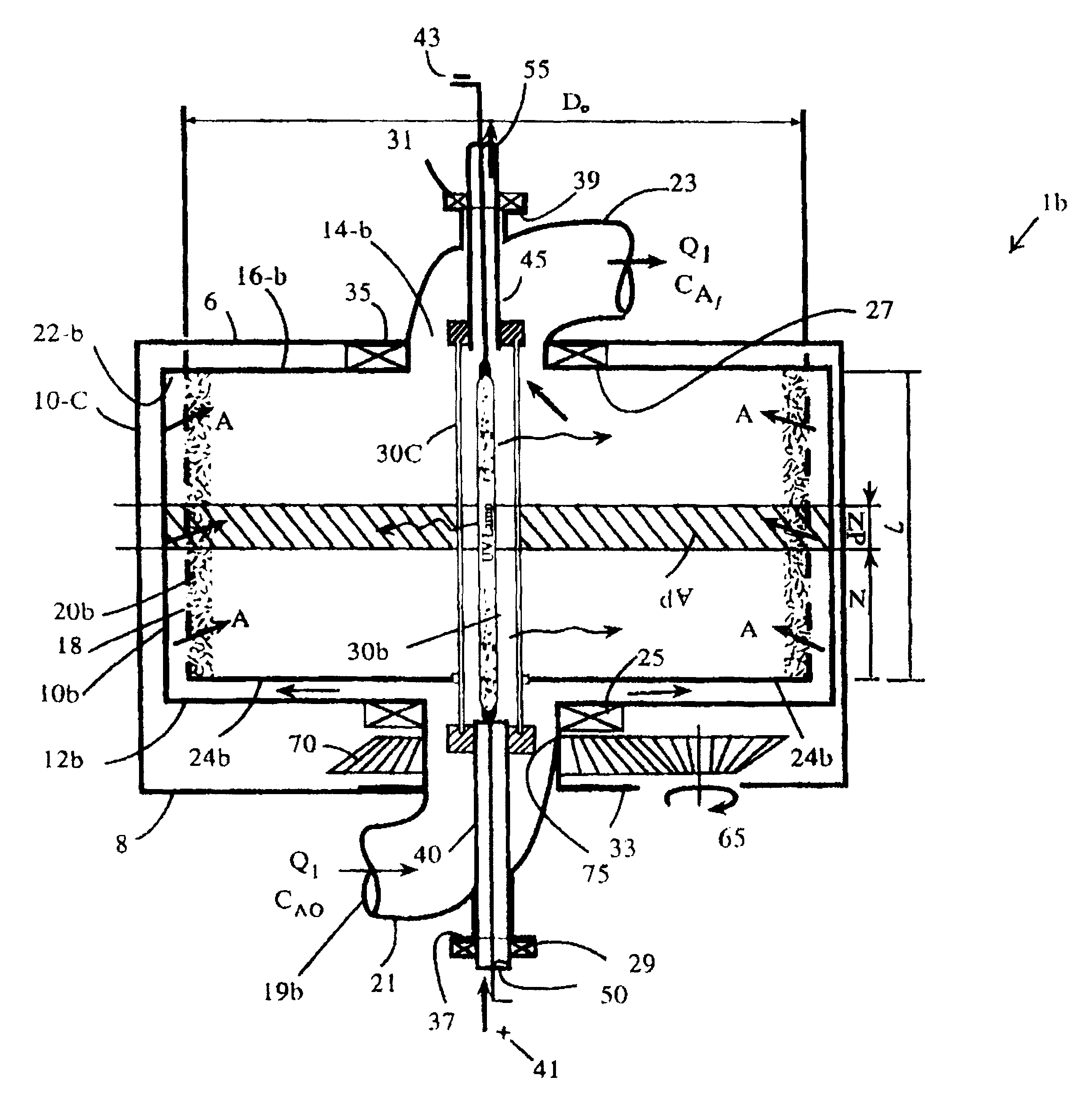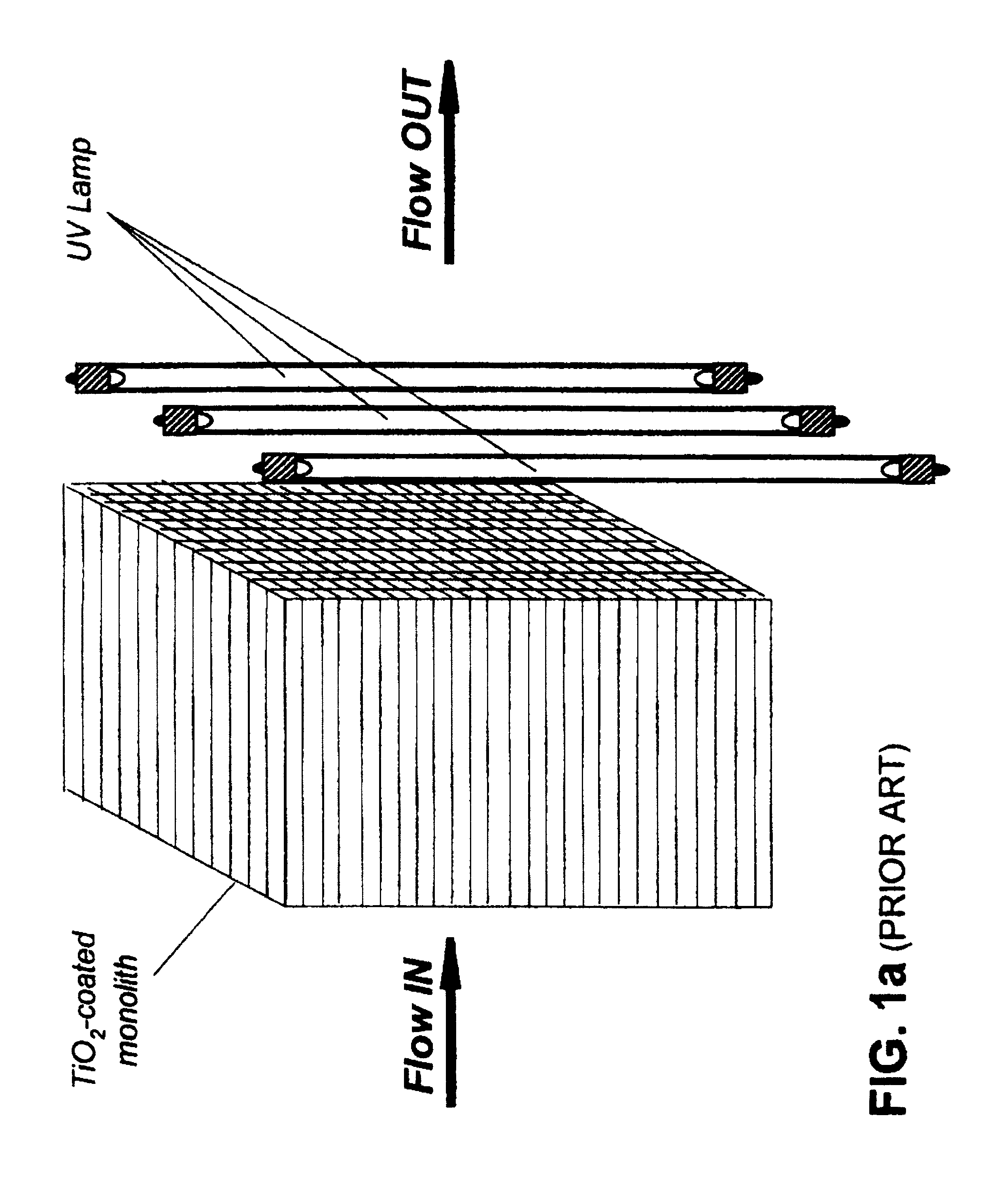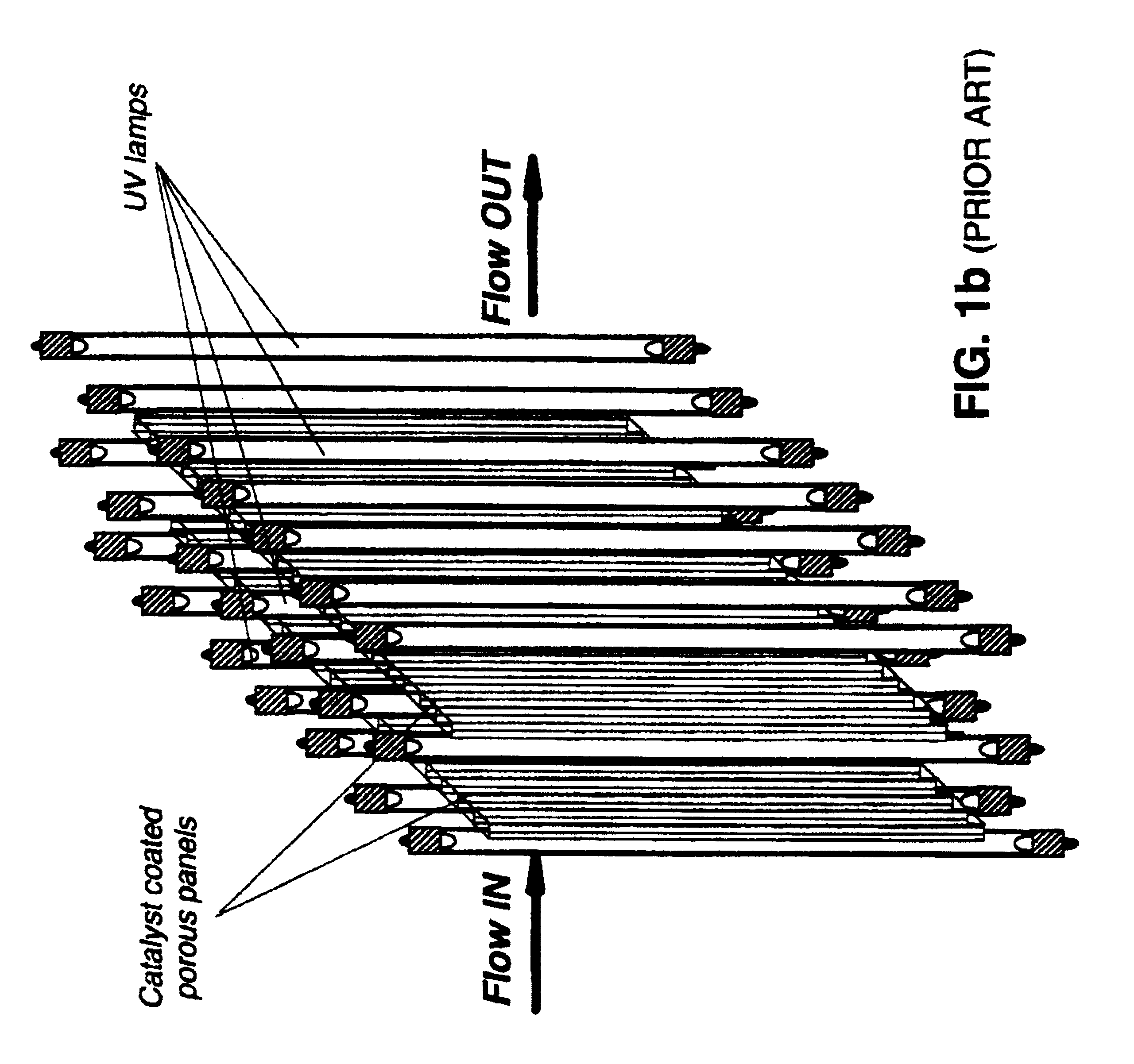Method for high flux photocatalytic pollution control
a photocatalytic pollution and high-fluid technology, applied in the direction of physical/chemical process catalysts, arsenic compounds, separation processes, etc., can solve the problems of irregular flow pattern through the mesh, poor catalyst deposition, and uniform catalyst coating, so as to minimize the intrusion of mass transfer
- Summary
- Abstract
- Description
- Claims
- Application Information
AI Technical Summary
Benefits of technology
Problems solved by technology
Method used
Image
Examples
example 1
This EXAMPLE describes the manner in which one preferred embodiment of the invention's low-flux base material / support was prepared. A rectangular piece of unaltered cotton fabric was machine washed in hot water using a small amount of liquid detergent (e.g. Proctor & Gamble's Tides.TM.), followed by two cold rinses. Then, tumble-dried at 55.degree. C., approximately. The entire process above was repeated for the second time. Fabric's post-wash, fully shrunk dimensions were about 95% of the original, as received dimensions. The rectangular piece of fabric was then sewn along the seam and at both ends into cuffs.
example 2
This EXAMPLE describes the manner in which one preferred embodiment of the invention's low-flux catalytic media was prepared. The catalyst in the form of titanium hydroxide, TiO.sub.2 or combination of titanium dioxide and titanium hydroxide was added to the synthetic polymeric, biopolymeric or combination of synthetic polymeric and biopolymeric fibers of the base material / support having a concentration in the range of 1-15 percent by weight of the media (base material and catalyst). The preferred form of the titanium containing catalyst material is in the form of commercial compounds marketed under the trade names such as Kemira UNITI-908.RTM., Degussa P-25.RTM., Hombikat UV100.RTM., Bayer Bayertitan 5585.RTM. and Ishihara ST.RTM. series (e.g. ST-01, ST-11 & ST-31), to name just few.
In one preferred embodiment of the present invention, the catalytic material constitutes titania particles that comprise the crystalline form of anatase or rutile, preferably anatase having BET surface ...
example 3
This EXAMPLE describes the manner in which other preferred embodiments of the low-flux catalytic media were prepared. Different organic, inorganic and metal-organic additives were added to the catalyst slurry of EXAMPLE 2. The solution containing the catalyst and additive was then applied to the base material of EXAMPLE 1. Finally, the supporting base material (fabric) was allowed to dry overnight at room temperature. The preparation method and other details for each additive is given in TABLE I. The rationale for using each additive is disclosed below:
Acridine yellow dye (AY): As an organic dye performs two useful functions: First, being a photocatalyst facilitates various electron transfer reactions (e.g. photogeneration of hydrogen from aqueous solutions of electron donors). Second, as a photosensitizer extends the absorption properties of the base material / support of semiconductor-based photocatalysts. Acridine yellow is one of few organic dyes that perform both functions. For e...
PUM
| Property | Measurement | Unit |
|---|---|---|
| wavelengths | aaaaa | aaaaa |
| temperature | aaaaa | aaaaa |
| temperature | aaaaa | aaaaa |
Abstract
Description
Claims
Application Information
 Login to View More
Login to View More - R&D
- Intellectual Property
- Life Sciences
- Materials
- Tech Scout
- Unparalleled Data Quality
- Higher Quality Content
- 60% Fewer Hallucinations
Browse by: Latest US Patents, China's latest patents, Technical Efficacy Thesaurus, Application Domain, Technology Topic, Popular Technical Reports.
© 2025 PatSnap. All rights reserved.Legal|Privacy policy|Modern Slavery Act Transparency Statement|Sitemap|About US| Contact US: help@patsnap.com



